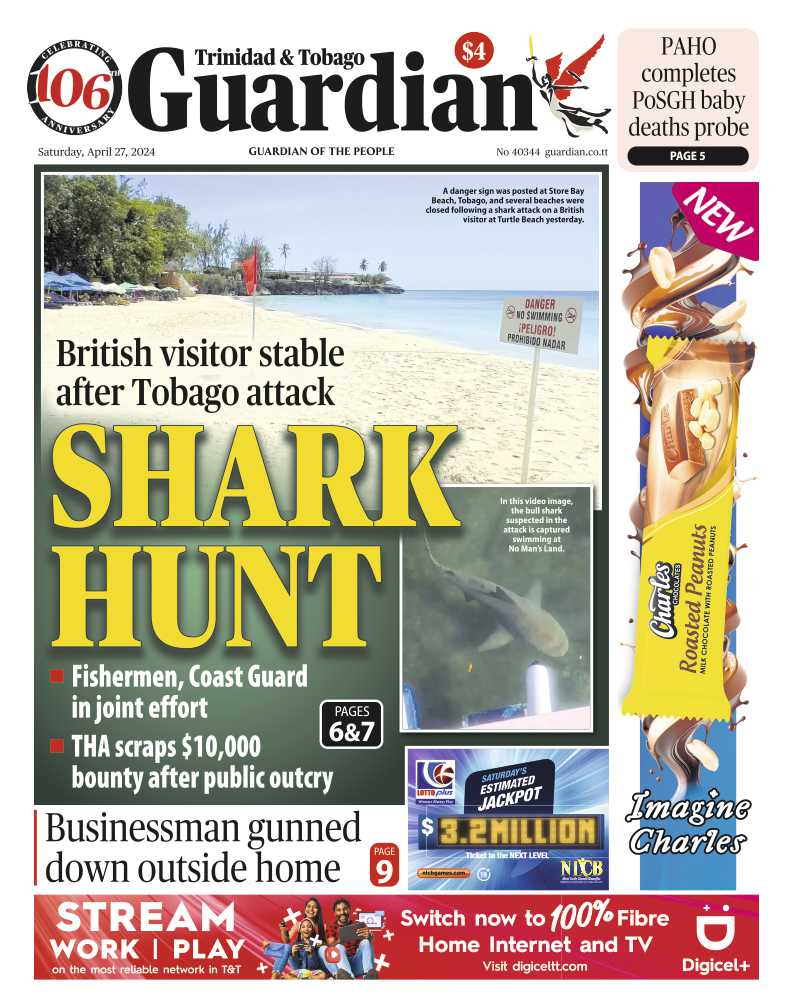KRISTY RAMNARINE
kristy.ramnarine@cnc3.co.tt
Matura’s leatherback turtle nesting season is being threatened by an accumulation of sargassum seaweed.
At the break of dawn yesterday, however, 28 people from the village located in east Trinidad started a drive to rectify the problem when they assisted Nature Seekers with the removal of the seaweed from the beach.
Nature Seekers managing director Susan Lackhan-Baptiste said while the country is at the height of its turtle-nesting season, fewer than usual numbers of the majestic sea creatures were currently making it to shore in Matura due to the sargassum problem.
“This year seems to be a very good year for nesting, as we had our first recording before Carnival,” said Lackhan-Baptiste.
“About three weeks ago, the sargassum seaweed started coming into the beach. This is terrible for the leatherback turtles, terrible for tourism.”
Dubbed the “floating rainforest,” sargassum seaweed is a genus of macroalgae.
The nickname comes from the location from where sargassum emanates, in the middle of the North Atlantic Subtropical Gyre: the Sargasso Sea, where predominant ocean currents create a vortex that amasses huge quantities of the seaweed.
According to research, the unique habitat is essential for a diverse array of fauna; for instance, open ocean sargassum mats provide important nurseries for sea turtles such as loggerheads.
But, over the past half-decade, sargassum has been increasing in unprecedented quantities and is affecting areas far from the Sargasso Sea.
Massive amounts have appeared on coasts from Florida through the Caribbean to South America, even reaching western Africa.
Lakhan-Baptiste said the accumulation of sargassum seaweed on beaches like Matura, pose a significant threat to turtle nesting, hindering nesting activities and potentially impacting hatchling survival.
“Large amount acts like a buffer, a barrier on the beaches, making it difficult for the leatherback turtles to find suitable nesting sites and dig nests,” she said.
“Sargassum accumulation can also prevent hatchlings from reaching the sea successfully.”
Large amounts of sargassum can create a physical barrier on beaches, making it difficult for turtles to find suitable nesting sites and dig nests. The seaweed can also alter the temperature of the sand, potentially impacting the sex ratio of hatchlings, as sea turtle sex determination is temperature dependent.
“The removal of the sargassum seaweed is of very high importance,” she said.
“We have engaged the community to experience our conservation efforts. Villagers will assist with the removal of the sargassum seaweed in various parts of the beach. The four-year initiative is part of the Nectar Project funded by The Green Fund to ensure the successful nesting of the leatherback turtles.
The nature Seekers leader also put out an invitation for any groups/individuals interested in assisting.”
She added, “Clean-up efforts will take place five days a week and on Saturdays with the exception of Sundays and public holidays.
“If you are interested, please let us know so that the necessary permit can be acquired. Once you are willing, we will be happy to have you.”
The leatherback turtle-nesting season in Trinidad and Tobago typically runs from March 1st to August 31st, with the main nesting beaches being Matura, Grande Riviere, and Fishing Pond.

